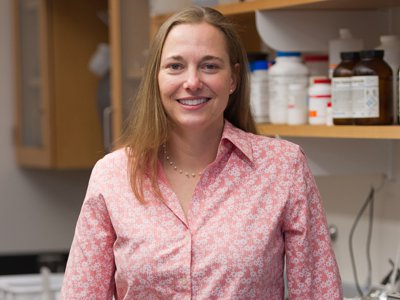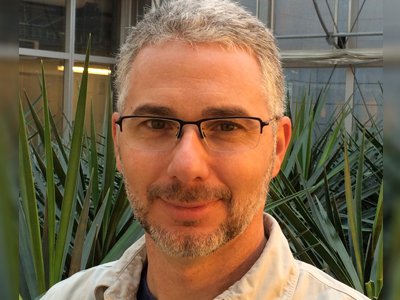Biologists Awarded Grant to Study, Teach Mutualism Between Species
Biology professors awarded $710,000 to study mutualistic yeast communities

Three Syracuse University biologists have received a $710,000, three-year grant from the National Science Foundation. Led by Associate Professor Kari Segraves, the researchers will investigate mutualistic species. Segraves and collaborators will use new, genetically designed yeast strains to explore stability of mutualist communities in the face of “cheaters,” as well as to teach high school students about biological fundamentals.
“I've historically studied a mutualistic system with only two partners, a moth and a plant, but most mutualistic interactions involve many partners,” Segraves says. “Using basic genetic approaches, we created a more complex community of unique yeast strains that we will use to test ideas about how natural communities function.”
Mutualisms are important for functions as diverse as growing crops to human digestion. Agriculturally, relationships between plants and pollinating insects, as well as roots and helpful below ground fungi, all keep plants growing and healthy. Bacteria residing in animal guts, including the roughly 1,000 species in ours, aid digestion while gaining nutrients from what their hosts’ eat.

Joining Segraves are co-principal investigators Assistant Professor David Althoff, and Research Assistant Professor David Rivers. Segraves and Althoff will manage the project, including recruiting students and overseeing experiments. Rivers will bring his experience with yeast to train all personnel in proper handling and culturing techniques. The Segraves lab is also recruiting a new postdoctoral researcher to collaborate with Chris Moore, an assistant professor at Colby College, to mathematically model community stability.
Using yeast strains that need specific nutrients to survive, the team will identify factors important to community survival. Segraves and colleagues will create different communities of multiple yeasts, where individual types either produce nutritional resources for the community to use, or suck up resources without contributing. Changing up the number and type of community members while tracking species survival will reveal what’s required to keep communities afloat in the face of cheaters.
To move beyond yeast communities, Moore and the new postdoctoral researcher will use experimental observations to create computer models that predict community stability more broadly. These models can then be used to test multi-mutualist communities in nature and predict their persistence.
Segraves predicts that having redundant nutrient suppliers will improve community stability in yeast—and beyond. “If you think about it, the more pollinator species a plant has, the more likely that it will be pollinated, even if some of its partners fail to pollinate,” she explains. “If the same plant were dependent on a single pollinator species, there is an increased risk of catastrophic failure.”
The yeast-mutualist system will also feature in high school teaching modules to be developed in conjunction with the Syracuse City School District and Syracuse University Project Advance (SUPA)—new and welcome collaborations, Segraves says. SUPA certifies high school instructors to teach Syracuse University courses for college credit during the standard school day. The two-week course, which supplements ongoing SUPA courses, will introduce students to concepts like the scientific method and population dynamics.
“Any time students engage in hands-on research to understand the natural world around them, the better,” says SUPA director Christina Parish.
“We know that students, particularly in high school, benefit from applying classroom knowledge for a deeper understanding of those concepts and educational outreach projects like Kari's may even help students discover an interest in biology and encourage them to pursue those interests in higher education and beyond,” Parish says.
Featured
Kari Segraves Professor
David Althoff Associate Professor and Associate Chair
